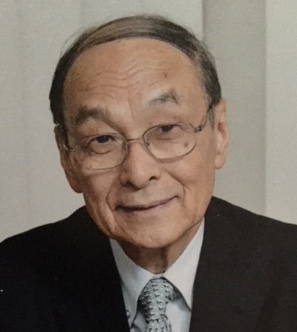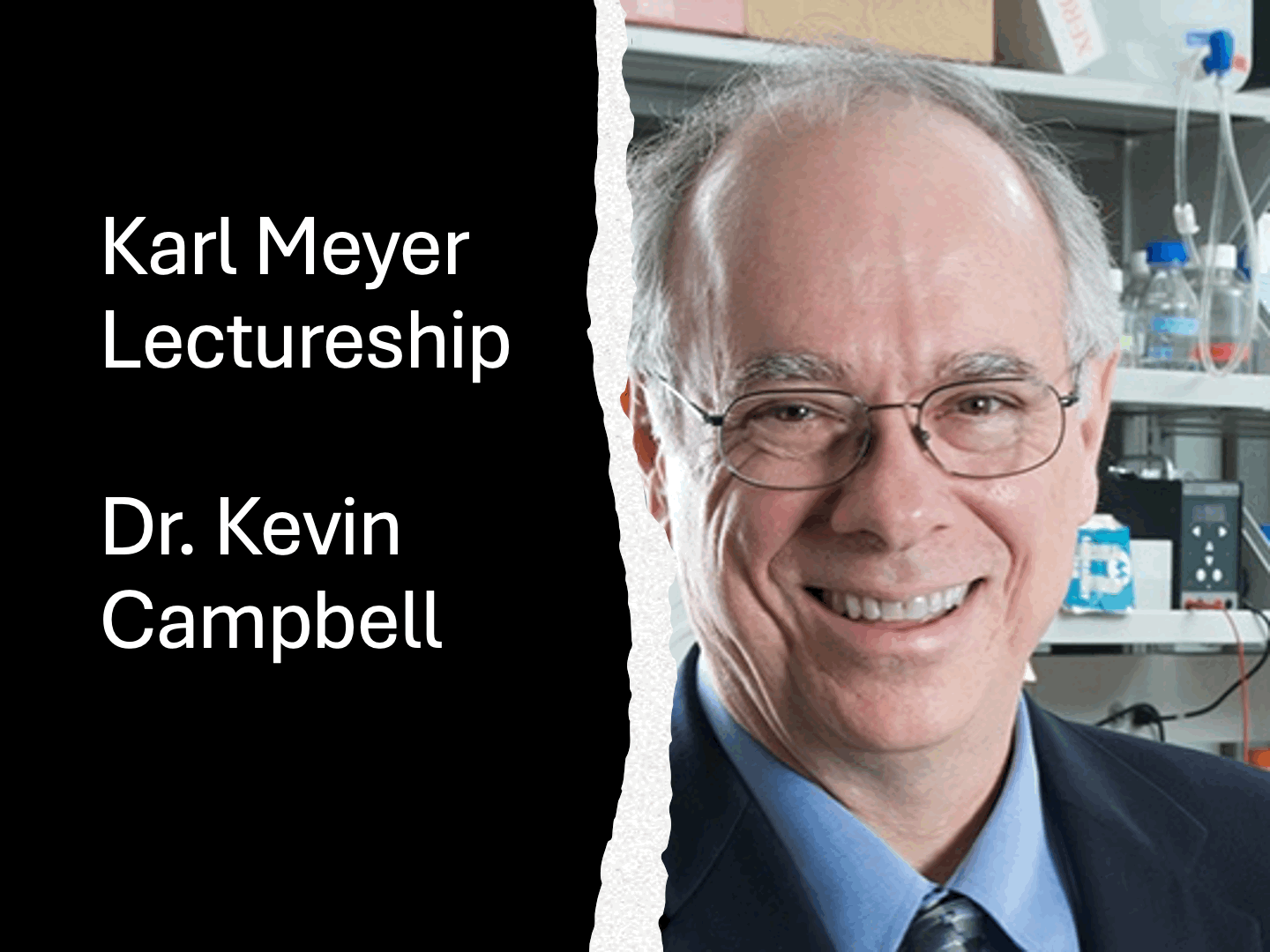The 2018 Karl Meyer Award goes to Dr Naoyuki Taniguchi
Donald L. Jarvis¹
Secretary, Society for Glycobiology, Department of Molecular Biology, University of Wyoming, Laramie, WY 82071 USA
The Society for Glycobiology is pleased to announce Dr. Naoyuki Taniguchi as the recipient of the 2018 Karl Meyer Lectureship Award.² The Karl Meyer Award was established in 1990 to honor the distinguished career of Karl Meyer and his outstanding contributions to the field of Glycobiology. This international award is given to well-established scientists with currently active research programs who have made widely recognized major contributions to the field of Glycobiology.
The Karl Meyer Lectureship Award was established in 1990 to honor the distinguished career of Karl Meyer and his outstanding contributions to the field of Glycobiology. This International award is given to well-established scientists with currently active research programs who have made widely recognized major contributions to the field of Glycobiology.
 The 2018 Karl Meyer Award was presented to Dr. Naoyuki Taniguchi, who is Professor Emeritus at Osaka University and Group Director in the Department of Glyco-Oncology and Medical Biochemistry at the Osaka International Cancer Institute. Professor Taniguchi, aka “Tani”, earned his MD degree in 1967 at the Hokkaido University School of Medicine. As a Ph.D. student, his research focused on g-glutamyl transpeptidase (GGT), a glutathione degrading enzyme. Redox regulation and oxidative stress have been his major interests since then. Tani initially discovered GGT activity is dramatically higher in fetal liver or upon azo dye-induced hepatocarcinogenesis, as compared to normal liver, suggesting GGT has onco-fetal properties. Tani then compared the biochemical properties of GGT from various sources and found its enzymatic properties were almost the same, but its glycosylation patterns were different, depending on the source. This was Tani’s first encounter with glycobiology. He subsequently purified the enzyme from normal liver and hepatoma cells and, in collaboration with Dr. Akira Kobata’s group, discovered GGT from hepatoma cells, but not normal liver has “bisecting GlcNAc” residues. During this period, Tani served as an Assistant Professor in the Department of Hygiene and Preventive Medicine, Hokkaido University School of Medicine (1973-1977) and as a visiting Associate Professor in the Department of Biochemistry, Cornell University Medical School (1976-1977), the Department of Environmental Medicine, Graduate School of Environmental Sciences, Hokkaido University (1977-1979), and the Biochemistry Laboratory of the Cancer Institute of Hokkaido University School of Medicine (1979-1986), which is where he began to focus his research on glycobiology under the guidance of Professor Akira Makita. The 2018 Karl Meyer Award was presented to Dr. Naoyuki Taniguchi, who is Professor Emeritus at Osaka University and Group Director in the Department of Glyco-Oncology and Medical Biochemistry at the Osaka International Cancer Institute. Professor Taniguchi, aka “Tani”, earned his MD degree in 1967 at the Hokkaido University School of Medicine. As a Ph.D. student, his research focused on g-glutamyl transpeptidase (GGT), a glutathione degrading enzyme. Redox regulation and oxidative stress have been his major interests since then. Tani initially discovered GGT activity is dramatically higher in fetal liver or upon azo dye-induced hepatocarcinogenesis, as compared to normal liver, suggesting GGT has onco-fetal properties. Tani then compared the biochemical properties of GGT from various sources and found its enzymatic properties were almost the same, but its glycosylation patterns were different, depending on the source. This was Tani’s first encounter with glycobiology. He subsequently purified the enzyme from normal liver and hepatoma cells and, in collaboration with Dr. Akira Kobata’s group, discovered GGT from hepatoma cells, but not normal liver has “bisecting GlcNAc” residues. During this period, Tani served as an Assistant Professor in the Department of Hygiene and Preventive Medicine, Hokkaido University School of Medicine (1973-1977) and as a visiting Associate Professor in the Department of Biochemistry, Cornell University Medical School (1976-1977), the Department of Environmental Medicine, Graduate School of Environmental Sciences, Hokkaido University (1977-1979), and the Biochemistry Laboratory of the Cancer Institute of Hokkaido University School of Medicine (1979-1986), which is where he began to focus his research on glycobiology under the guidance of Professor Akira Makita.
In 1986, Tani was appointed Professor and Chair in the Department of Biochemistry at Osaka University School of Medicine. His research group developed an assay for the N-acetylglucosaminyltransferases (GnTs) and found GnT-III activity, which produces bisecting GlcNAc, is barely detectable in normal liver, but markedly higher in fetal liver and azo dye-induced hepatoma. His group purified GnT-III to homogeneity from rat kidney using a unique affinity chromatography method with donor or acceptor substrates as ligands. After obtaining its partial amino acid sequence, they successfully identified the GnT-III gene and reported it in the J. Biol. Chem. (1992). Tani’s group went on to identify several other glycosyltransferase genes, including Fut8, GnT-VI, GnT-IV, GnT-V, GnT-IX (Vb), and distal type IGnT using a similar approach. At that “pre-genome” time, no comprehensive glycosyltransferase sequence data were available, so Tani’s group had to purify each enzyme in order to identify their genes.
Tani’s group subsequently tackled the biological significance of the glycan structures formed by these glycosyltransferases using gene-transfected cells, transgenic mice, and knockout mice. His group focused primarily on N-linked glycans and identified several target glycoproteins for glycosyltransferases such as GnT-III, IV, V, VI, IX (Vb), and Fut8. The targets included E-cadherins, integrins, matriptase and TGFb/EGF receptors, among others, and the studies collectively indicated N-glycan addition produces marked changes in protein functions, which demonstrated the physiological importance of these glycans.
Among the glycosyltransferases whose genes were identified by Tani’s group, Fut8 and its reaction product, core a1,6-linked fucose (core fucose), are now drawing special attention. For example, core fucose is a key element of an important cancer biomarker, core-fucosylated a-fetoprotein (AFP-L3), in hepatocellular carcinoma. Moreover, it is now well known that removal of core fucose from the Fc N-glycan on IgG1 enhances antibody-dependent cellular cytotoxicity by ~100 fold. Therefore, removal of core fucose is now regarded as a promising strategy for enhancing the efficacy of therapeutic antibodies, including those used to treat human cancers. Tani’s group also discovered that Fut8-knockout mice develop emphysema-like changes, as well as growth-retardation phenotypes, and core fucose on the T-cell receptor is essential for T-cell activation. Quite recently, mutations in the human FUT8 gene were reported to cause congenital disorders of glycosylation, further indicating the functional importance of this enzyme in mammalian development.
Working on GnT-III, Tani’s other signature enzyme, his group found the product of this enyzme, bisecting GlcNAc, has a protective role against melanoma cell metastasis. This is because it inhibits the addition of b1,6-linked GlcNAc by GnT-V, which produces one of the N-glycans involved in metastasis. This was one of the first reports to clearly show that glycan structures on cancer cells can influence their malignancy.
After his retirement from Osaka University Graduate School of Medicine in 2006, Tani continued his research as an Endowed Chair Professor in the Department of Disease Glycomics, Research Institute of Microbial Research, Osaka University (2006-2009), and Director of the Systems Glycobiology Research Group in RIKEN (2007-2018). His group showed Fut8-heterozygous knockout mice are an excellent model for COPD (chronic obstructive pulmonary disease) in humans. They also showed ablation of the GnT-III gene in mice resulted in a marked decrease in the formation of plaques derived from amyloid-beta peptides, leading to an improvement in cognitive function. Finally, they showed the subcellular localization of the amyloid-beta-producing enzyme, BACE-1, was altered in all GnT-III knockout mice, resulting in the inefficient production of amyloid-beta in these mice. These results strongly indicate GnT-III could be an attractive drug target for the treatment of Alzheimer’s disease.
After Tani’s “second retirement” from RIKEN in March 2018, his scientific journey still continues as a Group Director, Department of Glyco-Oncology and Medical Biochemistry, Osaka International Cancer Institute. Tani is not only an exceptional scientist and long-standing leader in the field of glycobiology, he is an outstanding role model for younger colleagues. His passion for science and medicine have influenced his numerous students and post-docs, as evidenced by the fact that he has supervised over 90 PhD students and 30 postdocs. Among these, over 40 are now Professors or hold equivalent positions in Universities and Research Institutes all over Japan, China, Korea, Myanmar, Malaysia, and the USA. Tani served as President of Society for Glycobiology in 2014 and organized the highly successful annual meeting in Hawaii. He has received numerous awards from various organizations, such as the International Glycoconjugate Organization (IGO) Award, the IUBMB medal, HUPO distinguished Service Award, and the Japanese Academy Prize.
In summary, the 2018 Karl Meyer Lectureship Award recognizes Professor Taniguchi’s seminal contributions to glycobiology, and to our understanding of the functional roles of glycans in various biological contexts.
|

 The 2018 Karl Meyer Award was presented to Dr. Naoyuki Taniguchi, who is Professor Emeritus at Osaka University and Group Director in the Department of Glyco-Oncology and Medical Biochemistry at the Osaka International Cancer Institute. Professor Taniguchi, aka “Tani”, earned his MD degree in 1967 at the Hokkaido University School of Medicine. As a Ph.D. student, his research focused on g-glutamyl transpeptidase (GGT), a glutathione degrading enzyme. Redox regulation and oxidative stress have been his major interests since then. Tani initially discovered GGT activity is dramatically higher in fetal liver or upon azo dye-induced hepatocarcinogenesis, as compared to normal liver, suggesting GGT has onco-fetal properties. Tani then compared the biochemical properties of GGT from various sources and found its enzymatic properties were almost the same, but its glycosylation patterns were different, depending on the source. This was Tani’s first encounter with glycobiology. He subsequently purified the enzyme from normal liver and hepatoma cells and, in collaboration with Dr. Akira Kobata’s group, discovered GGT from hepatoma cells, but not normal liver has “bisecting GlcNAc” residues. During this period, Tani served as an Assistant Professor in the Department of Hygiene and Preventive Medicine, Hokkaido University School of Medicine (1973-1977) and as a visiting Associate Professor in the Department of Biochemistry, Cornell University Medical School (1976-1977), the Department of Environmental Medicine, Graduate School of Environmental Sciences, Hokkaido University (1977-1979), and the Biochemistry Laboratory of the Cancer Institute of Hokkaido University School of Medicine (1979-1986), which is where he began to focus his research on glycobiology under the guidance of Professor Akira Makita.
The 2018 Karl Meyer Award was presented to Dr. Naoyuki Taniguchi, who is Professor Emeritus at Osaka University and Group Director in the Department of Glyco-Oncology and Medical Biochemistry at the Osaka International Cancer Institute. Professor Taniguchi, aka “Tani”, earned his MD degree in 1967 at the Hokkaido University School of Medicine. As a Ph.D. student, his research focused on g-glutamyl transpeptidase (GGT), a glutathione degrading enzyme. Redox regulation and oxidative stress have been his major interests since then. Tani initially discovered GGT activity is dramatically higher in fetal liver or upon azo dye-induced hepatocarcinogenesis, as compared to normal liver, suggesting GGT has onco-fetal properties. Tani then compared the biochemical properties of GGT from various sources and found its enzymatic properties were almost the same, but its glycosylation patterns were different, depending on the source. This was Tani’s first encounter with glycobiology. He subsequently purified the enzyme from normal liver and hepatoma cells and, in collaboration with Dr. Akira Kobata’s group, discovered GGT from hepatoma cells, but not normal liver has “bisecting GlcNAc” residues. During this period, Tani served as an Assistant Professor in the Department of Hygiene and Preventive Medicine, Hokkaido University School of Medicine (1973-1977) and as a visiting Associate Professor in the Department of Biochemistry, Cornell University Medical School (1976-1977), the Department of Environmental Medicine, Graduate School of Environmental Sciences, Hokkaido University (1977-1979), and the Biochemistry Laboratory of the Cancer Institute of Hokkaido University School of Medicine (1979-1986), which is where he began to focus his research on glycobiology under the guidance of Professor Akira Makita.